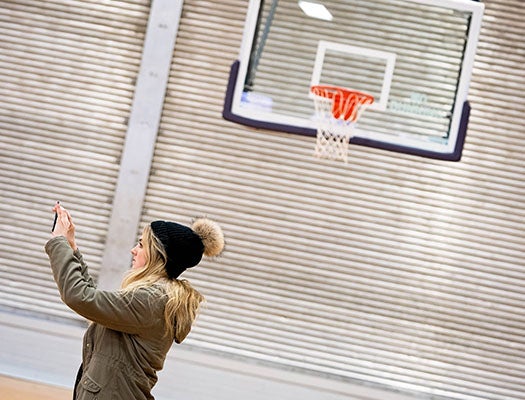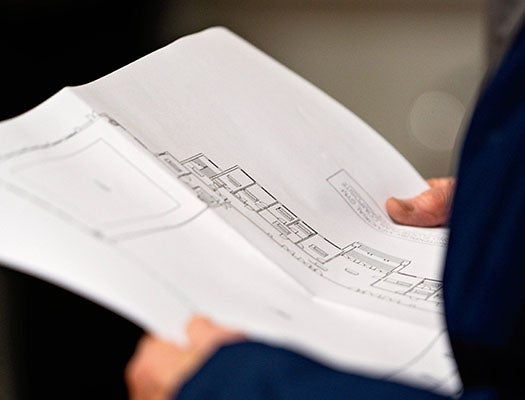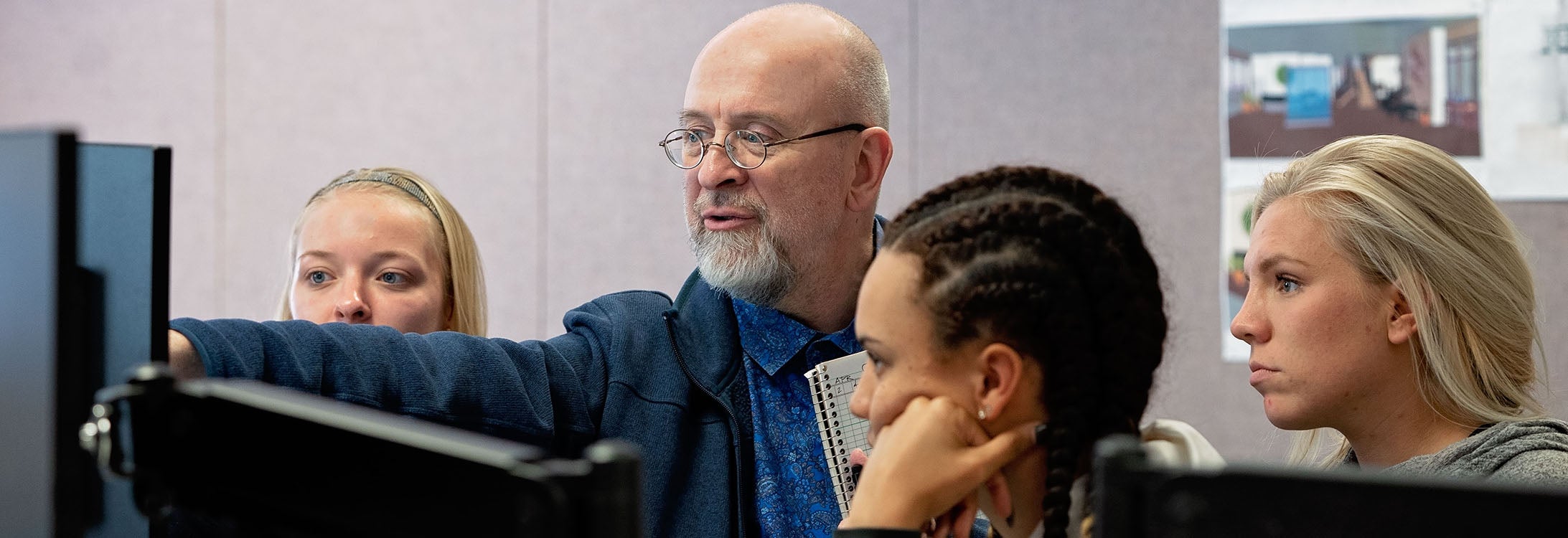RETOOLING CHRISTENBURY GYM
Interior design students explore adaptive reuse of historic building
An interior design class at East Carolina University has been working this semester on a project close to home: Christenbury Memorial Gym
The students have created conceptual designs for potential adaptive reuse of the 67-year-old building and gym, which houses ECU’s Army ROTC program. While no real-world changes have been announced by university officials for the building, students have explored what-ifs through the senior capstone project.

An interior design student photographs Christenbury Gym.
Seven teams of students in Charles Gustina’s Department of Interior Design and Merchandising class have developed plans that range from bringing ECU’s Air Force and Army ROTC together to opening a wellness center with sleeping pods.
“The students have been coming up with some interesting and viable ideas for ways to reuse the building,” Gustina said.
He invited the College of Health and Human Performance’s Advancement Council to meet with students and tour the building in January as brainstorming got underway.
Several remember Christenbury from its heyday: dances held in the gymnasium, health and physical education classes, the swimming pool, and bleachers to watch the ECU’s basketball and swim teams, which competed there until the construction of Minges Coliseum.
Built on the grounds of the university’s dining hall vegetable garden, the building was dedicated to the memory of faculty member John Christenbury and students lost to service in World War II.
Mike Bunting ’61 served on the HHP advancement council for 20 years and remembers taking his swim test in the building.
“It has historical value. It’s critical that this building, with so much history, remain a focal point of this university,” said Bunting, who liked the idea of consolidating the campus ROTC organizations into a military complex. Air Force ROTC is currently located in Wright. He also suggested a Wounded Warrior program with ECU’s proximity to U.S. military bases and National Guard units.
Cara Phillips of Phillips Architecture in Raleigh has been the design director for the project and met with students several times during the semester. Laurel Wright, chief accessibility officer in the N.C. Office of State Fire Marshall and an architect herself, has advised students on U.S. accessibility codes.
During the first visit, Phillips gave students tips from “always take pictures” and “note ceiling heights” to “does it bear weight?”
“What’s structural and has to stay?” she asked. “We’re looking at all these things.”

A student holds a footprint of Christenbury Gym.
With the project due in April, Gustina checked in with students a few days before updates were due to Phillips in March.
“There’s more to it than just going in and designing it,” said senior Anna Nichols of Durham, who is part of the 5Star team. “We have a lot more problems because it’s an older building. I have learned to work with those problems.”
For instance, the bleachers, perched along two walls above the gymnasium floor, would cost too much to remove but have to be brought up to ADA code. The group would consolidate both Army and Air Force ROTC units into the building. The 5Star team planned to improve the simulation room, create bigger classrooms with dividers rather than walls, refurbish the basketball court and cover and turf the pool, making more room for training space.
“In reality, you’re going to always be working in groups, and there always will be challenges, but you have to face those challenges,” Nichols said.
Another team, Rejuv, proposed turning Christenbury into a physical and mental wellness facility complete with counseling, meeting and conference space, a sleeping pod room, and café – a total self-care center.
“I think it’s worth preserving the history of the building, but the number will shock people,” said senior Avery Hallstrand of Raleigh. “The façade is so pretty. It’s one of my favorite buildings on campus.”
The group was surprised by “all kinds of nooks and crannies” in the building, even a spiral staircase that leads downstairs to the pool.
“We’re upgrading the function of the building,” said senior Elizabeth Ray of Cary. “We’re making it all environmentally sound and friendly.”
For more information on the teams and their design process, visit http://blog.ecu.edu/sites/idsn4202/.

Students and College of Health and Human Performance Advancement Council members tour Christenbury Gym.
